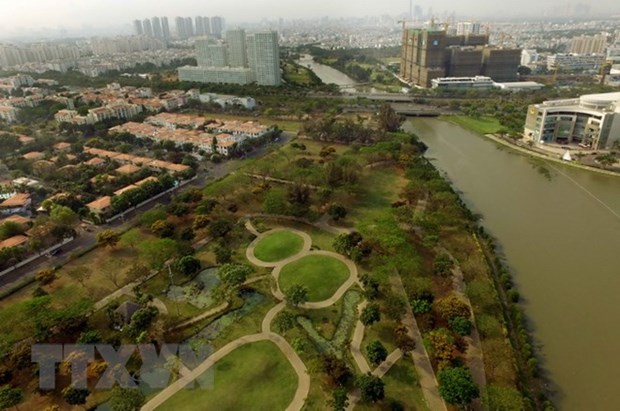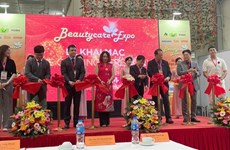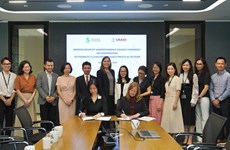Time for Vietnamese developers to go green
With Vietnam set for rapid urbanisation, sustainable development is an urgent task for the property sector, a seminar heard in HCM City on July 19.
 An urban area in HCM City (Photo: VNA)
An urban area in HCM City (Photo: VNA)HCM City (VNS/VNA) - With Vietnam set for rapid urbanisation, sustainable development is an urgent task for the property sector, a seminar heard in HCM City on July 19.
Speaking at “Green Development Strategy for Real Estate”, Tran Ngoc Chinh, chairman of the Vietnam Urban Development and Planning Association, said: “Real estate projects are always facing the challenge of balancing urban development and preservation of natural resources and cultural aspects.”
He admitted that urbanisation in HCM City and Hanoi has not maintained this balance and now have to pay the price for their unsustainable development.
“Severe traffic congestion and flooding are the consequences.”
Several famous tourism destinations like Sapa, Da Lat and Ha Long have also lost their unique character to urbanisation, he said.
“Every year, cities and towns all around the country receive 1.25 million people coming to work and live. Vietnam has an urbanisation rate of 38 percent and the figure will soon be 50 percent.
“Real estate development is now a problem since it lacks humanity (too many people in high-rise buildings with little green space) and linkages with other social infrastructure like schools, hospitals, electricity, water supply, waste treatment and public space.”
Vietnam must move towards smart cities, where everything is connected with each other and energy efficiency is mandatory, he said.
Pannir Chelvam, senior director of Keppel Land Vietnam, who used to work for the Singaporean urban planning authority, spoke about green real estate development in Singapore.
“Green experts work very closely with relevant authorities and involved partners, including investors, from the beginning of the project in all aspects: planning, design, construction, project development, public space.”
The Singaporean Urban Redevelopment Authority has the right and takes all responsibility for planning and real estate developers must follow all regulations related to use of raw materials and natural resources and must get green certification.
“Environmental impact assessment and biological impact assessment for construction must be submitted and examined by relevant authorities.”
Real estate developers must ensure harmony between all natural factors and take advantage of natural conditions for wind and lighting.
“Independent consultancies work closely with developers while relevant authorities supervise them.”
In Singapore, renewable energy is encouraged and developers can get incentives and tax breaks, he said.
“Seventy per cent of the lighting must be by natural sunshine, water supply and treatment must be properly managed.
“Waste treatment also gets high priority and residents are carefully taught how to treat their waste.”
Developers must make up any green area that they use for construction, he added.
Do Huu Nhat Quang, founder and CEO of GreenViet, said Vietnam has only 150 certified green buildings, a tiny proportion in comparison with neighbouring countries.
“High costs, no demand from customers and no incentives from the Government are the reasons for this situation.”
It would take developers to change this as they become aware of the benefits of green development.
“Green construction is a global trend. Developers can get high-class customers for green buildings.”
Pham Lam, founder and CEO of DKRA Vietnam, said: “Customers’ awareness of green development is improving. They have begun to pay more attention to green spaces and how the buildings are operated.”-VNS/VNA













